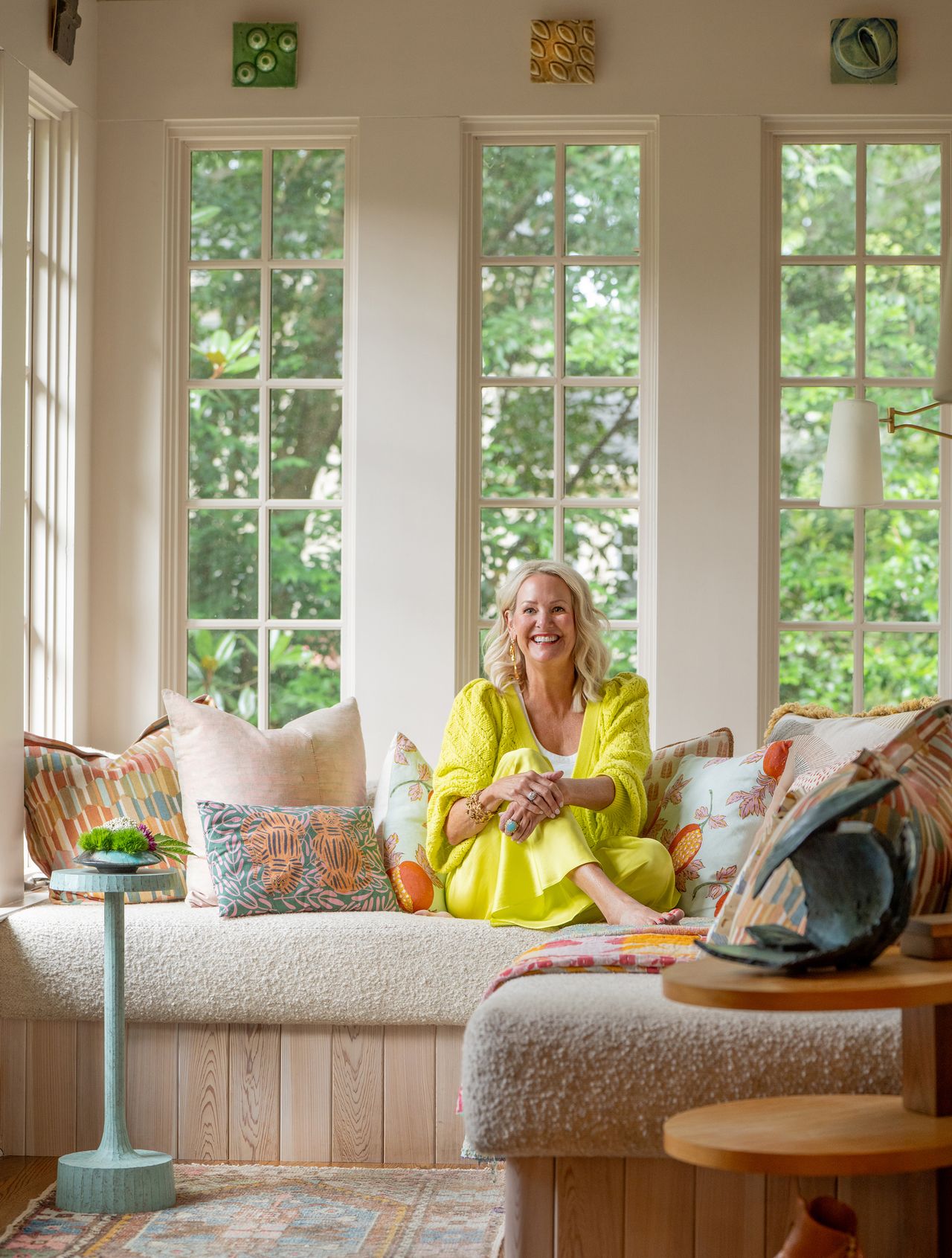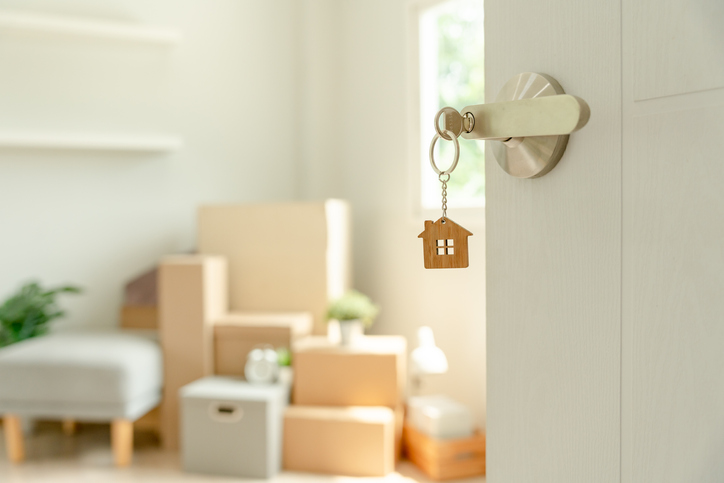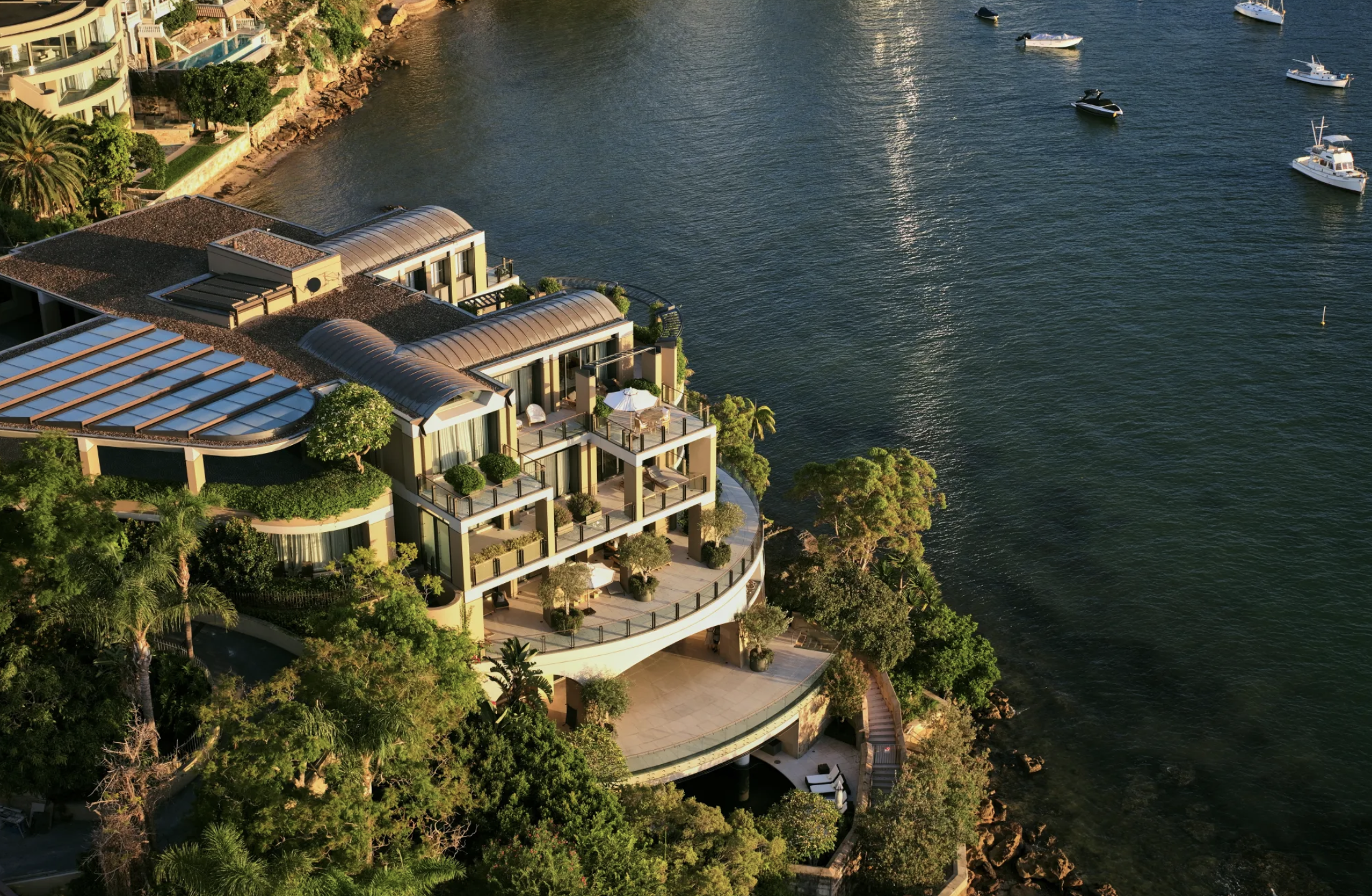What I Wish I Knew Before I Downsized: Homeowners on Their Missteps and Smart Solutions
When you shrink your square footage, it’s easy to make design mistakes. Here, how empty-nesters, retirees and the newly single learned from their errors.
THREE YEARS AGO , when Marilee Bear looked around her 3,200-square-foot house in Marin County, Calif., it felt big and lonely. “I was a single parent of 6-year-old twins who spend half their time at their dad’s house,” said the software executive. She wanted to teach her children about adventure, travel and experience—“not things,” she recalls.
And so she sold her big house to create more cash flow and a simpler life in a 1,200-square-foot bungalow—albeit one with spiffy elements chosen with the help of Lisa Tornello, an interior designer with Millroad Studio in San Anselmo, Calif. Among them: Calacatta marble backsplashes and a white sectional big enough for her and her boys to cuddle on. “I am in my 40s and now living the life I truly wanted.”
Bear’s one regret? “I didn’t anticipate the amount of sports equipment the boys would need as they grew.” For now, two sets of basketball, flag football, soccer, tennis and lacrosse gear squat in the garage while Bear continues to pare down elsewhere.
The itch to simplify comes in many forms: retirees seeking walkable neighborhoods, empty-nesters preferring low-maintenance, lock-it-and-leave-it apartments. But there can be a lot of Dick van Dyke-like stumbles over old ottomans along the way to smaller digs. Here, designers and homeowners who’ve been knee-deep in stuffed basements and garages share the hard-earned lessons of shrinking their footprint.
Appreciate Your Desire for Company
A number of folks we spoke with realised quickly that they’d cut their hosting capacity too drastically. Empty-nesters Deborah Berger and her husband had moved from a 4,000-square-foot house to a 1,300-square-foot cottage in Maynard, Mass., when Covid hit. The couple’s two grown sons briefly returned home to bunk with them—one slept in the office and the other on a futon at the bottom of the attic steps. “Not only had I gotten rid of their family home, but I could not even welcome them to visit,” said the administrative assistant, 66. The boys have since moved out, but the couple are contemplating converting the attic into an extra bedroom.
Designer Jessica Jubelirer of Montecito, Calif., says some people discover they need to rightsize after they downsize. “One empty-nester couple I worked with chose a chic little condo in Bethesda, Md. They were quite excited,” she said, but they soon realized there was no room for family or friends to stay. Jubelirer says the problem was corrected two years after they moved in, when the unit next door became available for purchase. The two apartments are separated by a home office, so there is built-in privacy. “The units are together but apart,” she said.
An architect for 50 years, Steve Vanze tells prospective clients, “We’ve already made every mistake we could.” Still, the 71-year-old, a principal at BarnesVanze Architects in Washington, D.C., miscalculated the importance of entertainment space when in 2021 he downsized from a 5,000-square-foot home in Chevy Chase, Md., to a 2,700-square-foot row house in Georgetown. So he and partner Lizzie Berardi, 65, who still resides mostly in Massachusetts, transformed the back garden off of an open kitchen living area.
“Now you can be cooking in the kitchen and have 15 guests in there comfortably,” said Vanze. “It better suits our lifestyle.”
If You Can, Hire Help
“Downsizing was probably the most daunting task of my lifetime, and I cure cancer for my day job,” said Lisa Kachnic, a radiation oncologist.
Nine years ago, Kachnic, 59, took two months off to relax and move from a three-story house with a basement and attic in Boston to a home half that size in Nashville, Tenn. “Biggest mistake of my life. There was no relaxation and no income, just sweat and exhaustion in trying to purge a lifetime of stuff,” including the sports-memorabilia collection of her husband, a college-baseball coach.
Their next downsize move, to a 1,400-square-foot Manhattan condo in 2020, took weeks instead of months. The difference? They hired designer Francis Toumbakaris of Francis Interiors in New York, “a genius at small spaces,” said Kachnic.
He inventoried the Nashville furnishings and divided them into three buckets: what could fit in the condo, what could be sold and what could be donated. In the condo he helped them create an office den that doubles as a guest room with the help of a blue lacquer Murphy bed. The wheeled coffee table can be rolled to the living room. It pops up and expands to seat eight for dinner.
Bear’s designer, Tornello, helped her and her twins squeeze into their California bungalow with flip-top storage in kitchen banquettes and drawers under the boys’ beds, but Bear also hired Merci Magdalena. The professional organizer, whose company Great Moves, in Marin County, Calif., charges between $3,000 and $10,000 to sort out a home.
One of the many tips that is helping Bear make room for her kids’ unanticipated sports equipment: an open box into which she tosses clothes that she notices she has not been wearing. When the carton is full, Bear hauls it to charity. “Now I don’t have to set aside a weekend to work through my closet because I am constantly and consistently pruning,” she said.
Reimagine Your Furniture

“Things you think won’t work sometimes do,” said Tami Ramsay, partner and principal designer at Cloth & Kind in Athens, Ga. Ramsay helped client Susie Mobley, 58, switch from a 6,000-square-foot home she shared with a husband and three children to a 2,400 square-foot cottage in Athens all her own. The new house, renovated by local firm the Misfit House, and Mobley’s previous home “could not be more different,” said Ramsay, “but about 70% of the things in the new house come from the old house.”
A pair of natural bamboo chairs, for example, got a coat of vibrant yellow paint and now brighten a screened-in porch. “I’m at a different stage of my life,” said Mobley, a retired director of development for a nonprofit. “I can be daring, more colourful.”
Carter Kay, an interior designer in Atlanta, has helped lots of clients downsize without leaving much behind. “You must be willing to rethink, reshuffle and pivot,” said Kay. An armoire that starred in the living room might end up in your bedroom. A crystal chandelier can elevate a kitchen. A rug cut and surged will cover a new floor. “Sometimes you need to keep moving things around until you can say ‘Aha! That’s it!’” said Kay.
Creative Reuse Has Limits
Designers say that 90% of the time, the old sofa has got to go. Even when in pristine condition, it rarely works in the new space. “A sectional is like an albatross. If it works, it’s a miracle,” said Ramsay.
On the other end of the scale, Berger says she made the mistake of sweating the small stuff when she moved to her cottage. As she unpacked old pillowcases and towels she found herself asking, “Why did I bother to move these things?” What she really wanted was the pleasure of potholders without burn marks and crisp new sheets.
Avoid the Storage-Unit Crutch
Stashing surplus furnishings in a pay-as-you-stow unit can be a costly way of kicking the can down the road. Five years after moving into her smaller house, Berger is still trying to divest herself of the things that she mothballed. “It’s crazy! One of the reasons you downsize is to save money, but I’ve spent thousands on storage!”
One designer’s rule of thumb: “The pieces that go in storage should be the ones that can’t be replaced,” said Kay, who reminds homeowners what goes in must also come out. Her prescription? A checkup every six months to see if anything can be resuscitated.
Talk to Your Accountant
Vanze described himself as “ruthless” when it came to ditching papers and other junk during the relocation to his D.C. townhouse. “I stopped looking in boxes,” he said. Trucks hauled away four loads of mystery boxes. “Fortunately I’m old enough that I don’t remember what might have been in them.”
Unfortunately, though, he purged his papers a little too aggressively. He followed the 7-year guide for holding on to tax records but didn’t realise that to reduce the tax on the sale of his old house, he needed all paperwork related to capital improvements there. When it came time, proving the value of the equity he had put into his old place required a lot of leg work. So before you destroy documents, talk to pros familiar with your financial situation who can tell you what to dig out and save, and what’s safe to feed the shredder.
‘Market’ Your Family Furniture
Mobley always made sure her three children understood the emotional significance of the furnishings in their 6,000-square-foot family home. She believed her kids might one day want them. (“They just don’t know it yet,” she recalls thinking). Thanks to the memories with which she imbued the pieces, her children were happy to take some of them when she transitioned to a 2,400-square-foot cottage for herself.
Her middle child, John, took a dresser that used to belong to her father. A sturdy little Sheraton-style four-drawer dresser from the 1970s, it’s a piece that many others of the 26-year-old’s generation might have rejected as dowdy. But Mobley enticed him with family history. “I told my son that my father always kept important papers in the top drawer, such as the cards I gave him over the years, and I used to open the drawers and peek inside,” said Mobley, whose father, also named John, died when she was pregnant with his namesake. “My son never met his grandfather, and he loves that dresser.”
Another son, 28, took an old set of forest-green encyclopaedias for a similar reason. The vintage volumes now sit on a bookshelf in his one-bedroom condo. Mobley had recounted to her children that her mother frequently made her look up subjects in them. “In fact, she insisted I learn a new word every week, and sometimes I would pick one out of the encyclopaedia,” she said. “It’s a memory for him. And he thinks they look cool.”
 Copyright 2020, Dow Jones & Company, Inc. All Rights Reserved Worldwide. LEARN MORE
Copyright 2020, Dow Jones & Company, Inc. All Rights Reserved Worldwide. LEARN MORE
Records keep falling in 2025 as harbourfront, beachfront and blue-chip estates crowd the top of the market.
A divide has opened in the tech job market between those with artificial-intelligence skills and everyone else.
The 2026 McGrath Report warns that without urgent reforms to planning, infrastructure and construction, housing affordability will continue to slip beyond reach for most Australians.
Australia’s housing market has reached a critical juncture, with home ownership and rental affordability deteriorating to their worst levels in decades, according to the McGrath Report 2026.
The annual analysis from real estate entrepreneur John McGrath paints a sobering picture of a nation where even the “lucky country” has run out of luck — or at least, out of homes.
New borrowers are now spending half their household income servicing loans, while renters are devoting one-third of their earnings to rent.
The time needed to save a 20 per cent deposit has stretched beyond ten years, and the home price-to-income ratio has climbed to eight times. “These aren’t just statistics,” McGrath writes. “They represent real people and real pain.”
McGrath argues that the root cause of Australia’s housing crisis is not a shortage of land, but a shortage of accessibility and deliverable stock.
“Over half our population has squeezed into just three cities, creating price pressure and rising density in Sydney, Melbourne and Brisbane while vast developable land sits disconnected from essential infrastructure,” he says.
The report identifies three faltering pillars — supply, affordability and construction viability — as the drivers of instability in the current market.
Developers across the country, McGrath notes, are “unable to make the numbers work” due to labour shortages and soaring construction costs.
In many trades, shortages have doubled or tripled, and build costs have surged by more than 30 per cent, stalling thousands of projects.
Need for systemic reform
McGrath’s prescription is clear: the only real solution lies in increasing supply through systemic reform. “We need to streamline development processes, reduce approval timeframes and provide better infrastructure to free up the options and provide more choice for everyone on where they live,” he says.
The 2026 edition of the report also points to promising trends in policy and innovation. Across several states, governments are prioritising higher-density development near transport hubs and repurposing government-owned land with existing infrastructure.
Build-to-rent models are expanding, and planning reforms are gaining traction. McGrath notes that while these steps are encouraging, they must be accelerated and supported by new construction methods if Australia is to meet demand.
One of the report’s key opportunities lies in prefabrication and modular design. “Prefabricated homes can be completed in 10–12 weeks compared to 18 months for a traditional house, saving time and money for everyone involved,” McGrath says.
The report suggests that modular and 3D-printed housing could play a significant role in addressing shortages while setting a new global benchmark for speed, cost and quality in residential construction.
Intelligent homes
In a section titled Weathering the Future: The Power of Smart Design, the report emphasises that sustainable and intelligent home design is no longer aspirational but essential.
It highlights new technologies that reduce energy use, improve thermal efficiency, and make homes more resilient to climate risks.
“There’s no reason why Australia shouldn’t be a world leader in innovative design and construction — and many reasons why we should be,” McGrath writes.
Despite the challenges, the tone of the 2026 McGrath Report is one of cautious optimism. Demand is expected to stabilise at around 175,000 households per year from 2026, and construction cost growth is finally slowing. Governments are also showing a greater willingness to reform outdated planning frameworks.
McGrath concludes that the path forward requires bold decisions and collaboration between all levels of government and industry.
“Australia has the land, demand and capability,” he says. “What we need now is the will to implement supply-focused solutions that address root causes rather than symptoms.”
“Only then,” he adds, “can we turn the dream of home ownership back into something more than a dream.”
From Italy’s $93,000-a-night villas to a $20,000 Bowral château, a new global ranking showcases the priciest Airbnbs available in 2026.
Micro-needling promises glow and firmness, but timing can make all the difference.























